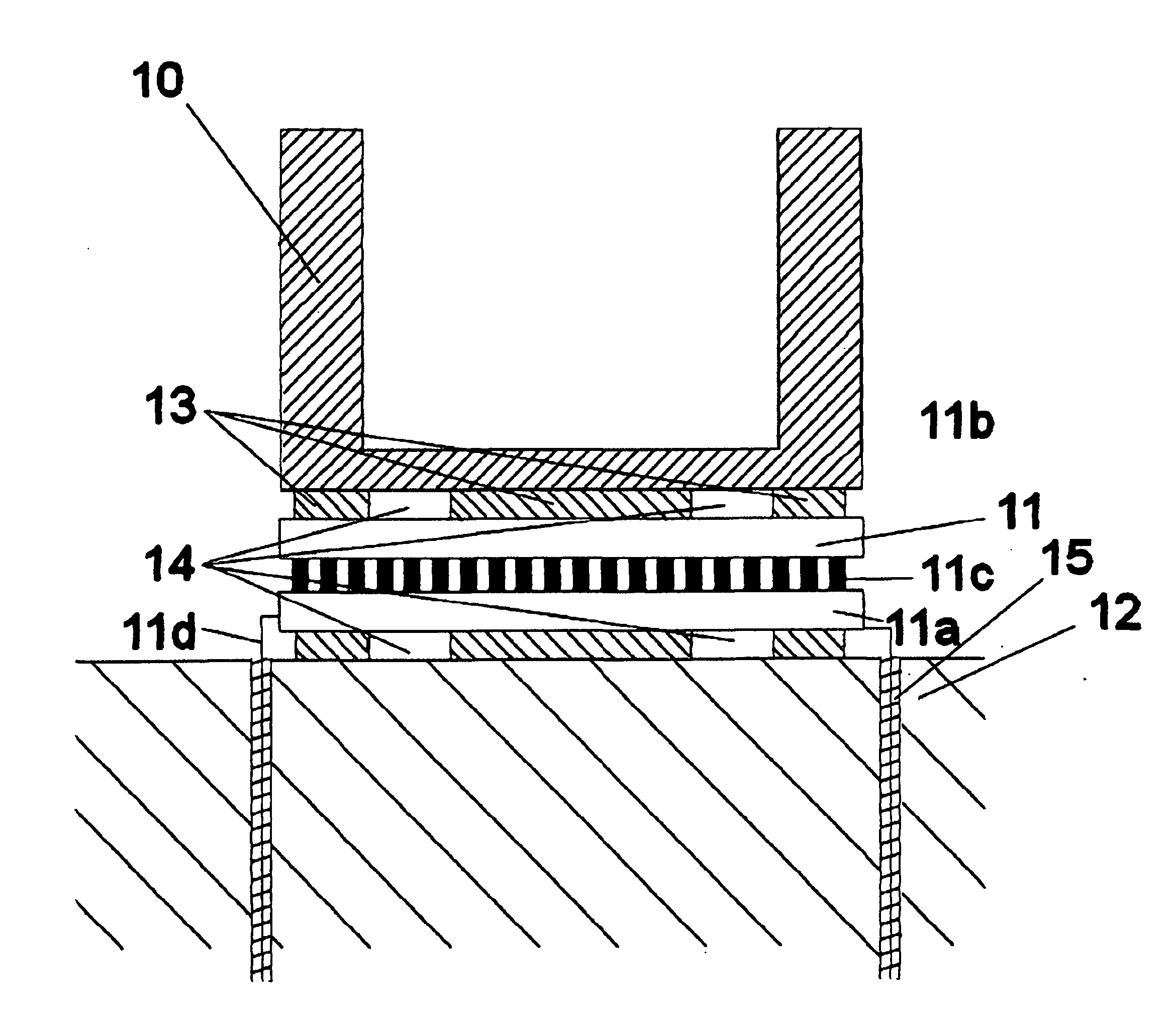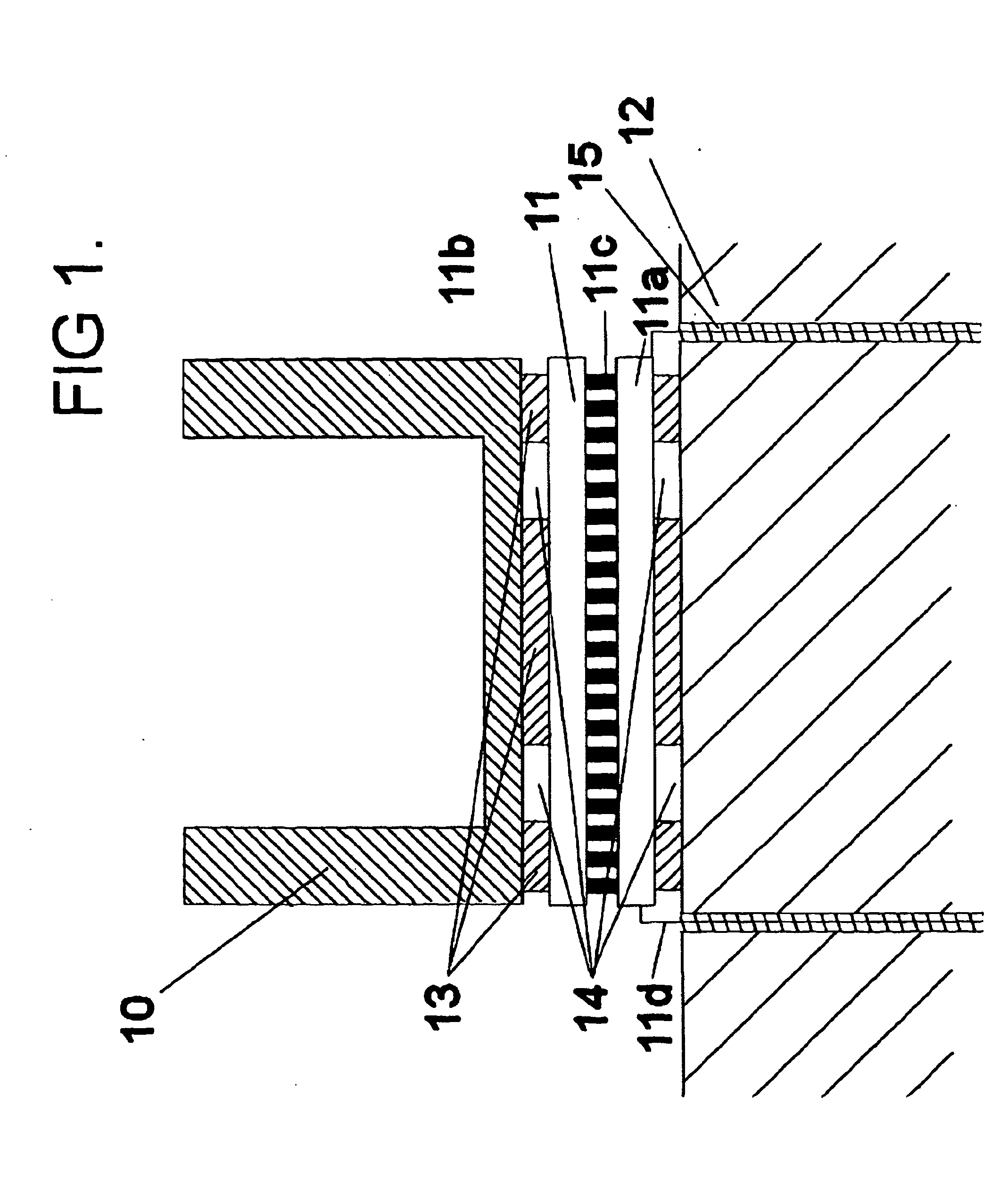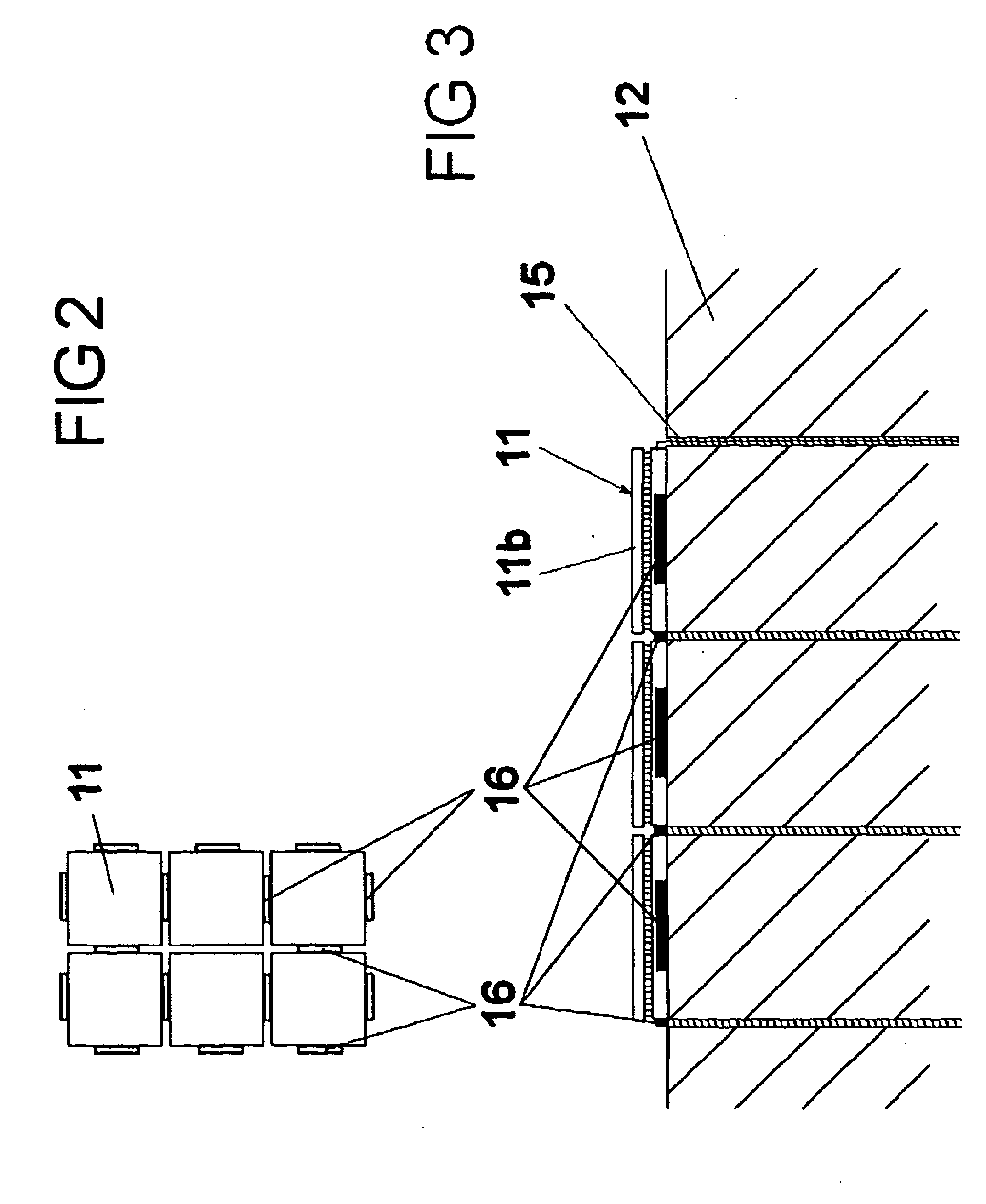Cell disruption
a technology of cell disruption and cell surface, applied in the field of cell disruption, can solve the problems of inability to describe the direct amplification of more complex targets, such as bacterial cells, and require the addition of proteinases, and achieve the effect of reducing the thermal stress thereon and avoiding intolerable stresses in the
- Summary
- Abstract
- Description
- Claims
- Application Information
AI Technical Summary
Benefits of technology
Problems solved by technology
Method used
Image
Examples
Embodiment Construction
[0043]FIG. 1 shows a reaction vessel 10 mounted via a pettier 11 to a HRM 12. The pettier 11 comprises a base plate 11a, a second plate 11b, a plurality of pillars 11c and feed wires 11d. The peltier 11 is attached both the vessel 10 and the HRM with an adhesive 13, the thickness of which is governed by spacers 14. The feed wires 11d pass through the HRM 12 from which they are electrically insulated by a thermally conductive plastics material 15.
[0044]As shown in FIG. 2 the HRM carries a plurality of crenellations 16 which form guides for the mounting of the peltiers 11. The HRM can alternatively posses a series of indentations such as in FIG. 3 into which the reaction vessels can be snugly mounted.
[0045]In use of the apparatus above described, with some target biological material in the vessel and the heat sink held at a temperature of the order of 50° C., current applied to the TEC in one direction reduces the temperature within the vessel to below freezing. This may in certain ca...
PUM
| Property | Measurement | Unit |
|---|---|---|
| Temperature | aaaaa | aaaaa |
| Temperature | aaaaa | aaaaa |
| Length | aaaaa | aaaaa |
Abstract
Description
Claims
Application Information
 Login to View More
Login to View More - R&D
- Intellectual Property
- Life Sciences
- Materials
- Tech Scout
- Unparalleled Data Quality
- Higher Quality Content
- 60% Fewer Hallucinations
Browse by: Latest US Patents, China's latest patents, Technical Efficacy Thesaurus, Application Domain, Technology Topic, Popular Technical Reports.
© 2025 PatSnap. All rights reserved.Legal|Privacy policy|Modern Slavery Act Transparency Statement|Sitemap|About US| Contact US: help@patsnap.com



